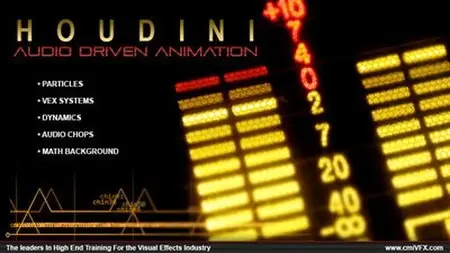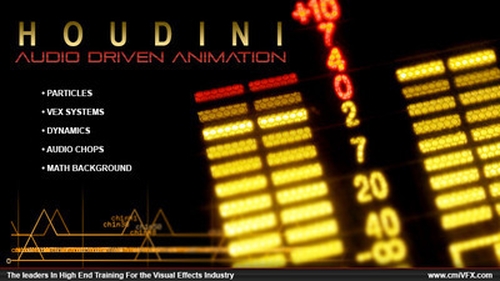cmiVFX - Houdini Audio Driven Animation
English | Mp4 493 kbps | 1240 x 576 12fps | aac 22,5kHz mono | 1.2 Gb
Genre: eLearning
cmiVFX has released the latest treat for its SideFX Houdini training product line titled "Houdini Audio Driven Animation". Modern technology gives us many opportunities to add a new sense to the common things. We can listen to the sounds of the universe, we can view the deepest ocean or we can visualize musical composition. In this video we'll do the latter. Using the time tested and industry proven Houdini procedural approach and its unique set of tools in CHOP, SOP and POP contexts, our piano will play in unusual way. In this unique training video, the user will learn techniques on how to extract data from MIDI files and how to use that data for piano animation and particle kinematics. As usual, we through back a nod to the well known cmiVFX style for making videos and break loose on some killer procedural modeling techniques using loops, Hscript and python scripting. For particles we'll use VEX, both for building ballistic trajectories and creating collisions. When your done watching this video, you will be left with a Houdini digital asset that can be reused again and again in your procedural pipeline.
Chapter Descriptions
Introduction
Anton will take you through an overview of the whole system, its parameters and all its possibilities.
Math Background
In this chapter we will cover some simple mathematics, which will help us to create ballistic trajectories for the particles being used. Starting with a parabolic system, we will build equations to govern each particle animation. These very same equations will be implemented in VEX code later in the video.
Constructing A CHOP Network
This chapter is about parsing MIDI files and extracting the data. For our purpose we need three types of information to drive particles and piano keys, so we will build three branches in CHOPs to process MIDI data.
Piano Keyboard
This portion of the video will entail the creating of the piano keys and placing them into a keyboard structure so that they can be used in the following chapters. We will use prebuilt geometry of the keys and a line SOP to copy this geometry using copy SOP with several mathematic expressions to showcase the power of Houdini proceduralism.
Creating Python SOP For Placing Keys
Now that we have completed all the previous steps, we will need to diagnose and fix some issues for the utmost keys of the keyboard to hep prevent holes in the piano. So we should substitute some piano keys with other ones. To make it possible, we will use the PYTHON SOP to change the point attributes of the template geometry our keys are copied to.
Spherical Firing Mechanism
In this chapter, we will create the miniature sphere firing mechanism that ties this whole project together. This mechanism is an analogue of a piano musician, but it fire spheres against fingers. Again, with prebuilt geometry we'll build the machine with some animation based methods.
Piano Hull
Anton will construct the main hull portion of the piano keyboard equipment that will give this project a more polished appeal. He will use several geometry pieces to build a procedural piano, where we can change total number of keys. And also he will merge all piano stuff together (hull and a keyboard).
Building Adhoc Geometry For Particle Kinematics
Now we will be building some miscellaneous items which will assist us in the particle animation sequence. There are two types of adhoc geometry in this project: points, where spheres should land and the points from which spheres should emit. We'll construct the points and incorporate them in.
Using VEX For Particle Kinematics
In the part of the video we will be implementing math earlier built in chapter 2 into VEX code for Particle Kinematics. You will see how simple math could do the beautiful work. Just using several lines of code in Houdini, and Voila, our particles will fly using parabola ballistic trajectory!
Particle Dynamics
This chapter will help the user learn to make collisions and bounce animations manually by using VEX as the backbone. Let's speed up our simulation with manual collisions. VEX is an ideal tool to handle bounces from the keys and collisions from the floor and to make particle simulation more predictable. As an option we'll use the Collision PO



